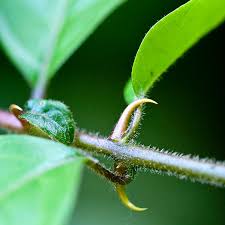
Breaking News
 Today's Technology: The Gateway to Psychotronic Weapons and the Reprogramming of Humanity
Today's Technology: The Gateway to Psychotronic Weapons and the Reprogramming of Humanity
 Netanyahu and Trump Host Libertarian Dinner!
Netanyahu and Trump Host Libertarian Dinner!
 American Doctor Organizations Are Such Shills for Big Pharma That They Cannot Be Trusted
American Doctor Organizations Are Such Shills for Big Pharma That They Cannot Be Trusted
 SCOTUS: Trump's DOGE Mass Federal Layoffs Can Resume
SCOTUS: Trump's DOGE Mass Federal Layoffs Can Resume
Top Tech News
 Insulator Becomes Conducting Semiconductor And Could Make Superelastic Silicone Solar Panels
Insulator Becomes Conducting Semiconductor And Could Make Superelastic Silicone Solar Panels
 Slate Truck's Under $20,000 Price Tag Just Became A Political Casualty
Slate Truck's Under $20,000 Price Tag Just Became A Political Casualty
 Wisdom Teeth Contain Unique Stem Cell That Can Form Cartilage, Neurons, and Heart Tissue
Wisdom Teeth Contain Unique Stem Cell That Can Form Cartilage, Neurons, and Heart Tissue
 Hay fever breakthrough: 'Molecular shield' blocks allergy trigger at the site
Hay fever breakthrough: 'Molecular shield' blocks allergy trigger at the site
 AI Getting Better at Medical Diagnosis
AI Getting Better at Medical Diagnosis
 Tesla Starting Integration of XAI Grok With Cars in Week or So
Tesla Starting Integration of XAI Grok With Cars in Week or So
 Bifacial Solar Panels: Everything You NEED to Know Before You Buy
Bifacial Solar Panels: Everything You NEED to Know Before You Buy
 INVASION of the TOXIC FOOD DYES:
INVASION of the TOXIC FOOD DYES:
 Let's Test a Mr Robot Attack on the New Thunderbird for Mobile
Let's Test a Mr Robot Attack on the New Thunderbird for Mobile
 Facial Recognition - Another Expanding Wolf in Sheep's Clothing Technology
Facial Recognition - Another Expanding Wolf in Sheep's Clothing Technology
Cat's claw bark emerges as Lyme disease's nemesis, outsmarting stealth bacteria when antibio

For decades, Lyme disease patients have been trapped in a cycle of debilitating symptoms and ineffective antibiotic treatments, their bodies ravaged by the elusive Borrelia burgdorferi bacteria.
But what if the answer lies not in Big Pharma's lab-made drugs, but in an ancient Peruvian herb? Emerging research reveals that Uncaria tomentosa, commonly known as cat's claw, holds powerful bioactive compounds that not only dismantle Lyme bacteria's defenses but also rebuild immune function—something antibiotics alone fail to achieve. In an era where corporations prioritize profits over cures, nature may hold the key to liberation from chronic suffering.
Key points:
Cat's claw, particularly its TOA-free Samento form, disrupts Lyme bacteria's shape-shifting abilities, making it far more effective than conventional antibiotics.
The herb modulates immune response, reduces inflammation, and protects neurological function—addressing Lyme's systemic damage.
Clinical studies, including a landmark 2020 study investigating botanical treatments, confirm Cat's claw and other botanical often faster recovery and fewer relapses compared to standard antibiotic-based Lyme disease treatments.
Supporting therapies like glutathione supplementation, detox protocols, and anti-inflammatory herbs amplify recovery.
Several botanical extracts, including black walnut hull, have emerged as therapeutic treatments for Lyme's disease.
How to spot Lyme Disease before it hijacks your health
Lyme disease is a master of disguise, often evading diagnosis due to its vague early symptoms. The hallmark bullseye rash (erythema migrans) appears in only 70% of cases, so absence doesn't rule it out. Early flu-like fatigue, muscle aches, and fever—common post-tick bite—are red flags.
As infection progresses, watch for neurological red flags: brain fog, facial palsy (Bell's palsy), or tingling in extremities. Chronic cases may mimic autoimmune disorders, with heart palpitations, joint swelling, or light sensitivity. If standard antibiotics fail or symptoms linger, advanced testing (like Western Blot or PCR) or co-infections (Babesia, Bartonella) may be at play. Act fast: early treatment prevents long-term havoc on the immune system.
How cat's claw dismantles Lyme's defenses
Lyme disease isn't just stubborn—it's a master of evasion. Borrelia burgdorferi morphs into different forms (spirochetes, cysts, and biofilm-protected colonies) to resist antibiotics. But cat's claw's alkaloids, like isopteropodine, wage biological warfare on these stealth tactics. Unlike synthetic drugs that only target one bacterial form, cat's claw's pentacyclic oxindole alkaloids (POAs) dismantle Lyme's inherent survival strategy.



